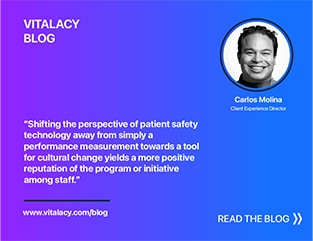If there’s any silver lining in the COVID-19 pandemic, it’s that hospitals and long-term care facilities now have precautions in place that can lead to lower morbidity and mortality from healthcare-acquired infections in the future.
COVID-19 has improved awareness of how diligent attention to hand hygiene, mask wearing, physical distancing, and other safeguards can reduce infections from viruses and bacteria. Prior to the COVID-19 pandemic, many health care workers set aside concerns they may have had about the spread of healthcare-acquired infections. Now, however, we all understand the dangers posed by a rapidly spreading and potentially lethal infectious disease.
After nearly a year of heightened precautions designed to slow the spread of COVID-19, which ones are likely here to stay?

1. Better hand hygiene, for both health care workers, outpatients and visitors.
You can’t argue with data, and data showing a clear connection between healthcare-acquired infections and poor hand hygiene continues to accumulate. Years ago, hand hygiene was identified as a simple, low-cost way to reduce infections and save lives and money in hospitals; yet, hand hygiene compliance remains a challenge.
Due to the Hawthorne Effect (workers stop complying when you stop watching them), compliance rates in many hospitals are inflated. Automated hand hygiene compliance monitoring promises to provide health care organizations with a truer baseline of present compliance and to better engage workers in improving their hand hygiene habits while accurately measuring any progress.
Both The Joint Commission (2018) and the Leapfrog Group (April 2020) have raised in bar in their expectations for hand hygiene compliance among workers, with Leapfrog (March, 2020) expressing a strong preference for automated, or electronic, monitoring. Outpatients and other visitors to health care facilities, with their pandemic experiences fresh in their minds, will expect easy access to hand sanitizer and many will likely keep a sharp eye out for those not using it.
2. Universal mask wearing in health care facilities.
During the pandemic, mask wearing inside of healthcare facilities became the norm, for workers, patients and visitors. Not only did this precaution help to slow the spread of COVID-19 both within hospitals and the community, mask wearing also reduced the flu and other viral infections significantly.
According to the Centers for Disease Control and Prevention, about 1,300 cases of the flu occurred in the United States between Sept. 27, 2020 and Jan. 30, 2021 (CDC, 2021). In past flu seasons within a comparable timeframe, the flu caused between 9 million and 45 million illnesses, 140,000 to 810,000 hospitalizations, and 12,000 to 61,000 deaths (CDC, 2020). And like COVID-19 did during 2020, the flu filled hospital beds and ICU units to full capacity in previous years.
In addition to crediting mask wearing, experts attribute a reduction in the flu to better hand washing, physical distancing, flu vaccinations, and other factors. But mask wearing stands as the most visible sign of an individual’s commitment to stopping the spread of infectious viral diseases. For the foreseeable future, expect healthcare facilities to continue to emphasize mask wearing by workers, outpatients and visitors.
3. Physical distancing.
Keeping one’s distance from others – and particularly doing everything to discourage crowding – is another important way to stop the spread. Healthcare facilities have used text messaging, improved scheduling and patient flow, and space redesign to prevent crowding in waiting areas. Workers and visitors have been discouraging from crowding in lunch and break areas. The COVID-19 era has introduced technology that encourages safe distancing while providing contact tracing.
Overcrowding in healthcare facilities was a problem before the COVID-19 pandemic (Moore, 2019). As hospitals and long-term care centers transform operations, they have an opportunity to optimize flow, enhance the patient experience, and even improve health outcomes by addressing the challenge of crowding.
4. Telemedicine and digital health.
The reluctance of clinicians and payers to accept telemedicine was swept away by necessity. The COVID-19 pandemic made video- and tele-conferences between clinicians and visitors much more commonplace, with most patients and providers satisfied with these virtual visits, according to several studies (Andrews, et al., 2020; Nguyen, 2020; Penn Medicine, 2020). This satisfaction, along with the lowered costs associated with these visits, will continue to make telemedicine a viable option in many situations. Advances in remote patient monitoring technology will allow clinicians to continually expand the virtual services they can provide.
Inpatients also will benefit from advances in digital monitoring. For example, Vitalacy is beta testing the Vitalacy Fall Alert (Nour-Omid, 2021), which uses an optical sensor and artificial intelligence to alert close-by care providers about patients whose movements while in bed predict a potential fall. The providers are alerted through a silent vibration and text message with the patient’s room number sent to a Vitalacy SmartBand worn on the wrist.
Creating a high perception of safety
While any one of these four precautions alone will not protect everyone from healthcare-acquired infections, together they can work wonders. They serve as substantial reminders of an organization’s commitment to safety. Patients and residents will not return to health care facilities until they are convinced they are safe. Having health care workers following these precautions conveys a visible commitment to safety and will have a positive impact on the health outcomes of everyone who steps into a care facility.
Request a demo of Vitalacy’s Automated Hand Hygiene Monitoring Solution today!
References
Andrews E, et al. Satisfaction with the use of telehealth during COVID-19: an integrative review. International Journal of Nursing Studies Advances, Nov. 2020, Vol. 10.
Centers for Disease Control and Prevention (CDC). Weekly U.S. influenza surveillance report. Jan. 30, 2021.
Centers for Disease Control and Prevention (CDC). Disease burden of influenza. Oct. 5, 2020.
The Joint Commission. Update: Citing observations of hand hygiene noncompliance. Jan. 1, 2018.
The Leapfrog Group. Summary of changes to the 2020 Leapfrog hospital survey & responses to public comments. March 23, 2020.
The Leapfrog Group. ASC Survey. Factsheet: hand hygiene. April 1, 2020.
Moore LG. Hospital overcrowding: a complex but solvable problem. Inside Angle from 3M Health Information Systems, May 10, 2019.
Nguyen M, et al. A review of patient and provider satisfaction with telemedicine. Current Allergy and Asthma Reports, Sept. 22, 2020;20(11):72.
Nour-Omid J. Vitalacy Fall Alert ready for beta testing; apply to become a partner! Vitalacy Blog, Jan. 26, 2021.
Penn Medicine News. Research shows patients and clinicians rated telemedicine care positively during COVID-19 pandemic. June 24, 2020.
Author
-

Janel Nour-Omid was inspired to start Vitalacy after losing her grandfather to a Healthcare-Acquired Infection. Through her background in computer science and product development and deep fascination in human behavior, she launched the Vitalacy platform designed to protect caregivers and patients from preventable infections and conditions. She was recognized in Forbes 30 Under 30 in Healthcare in 2020.



